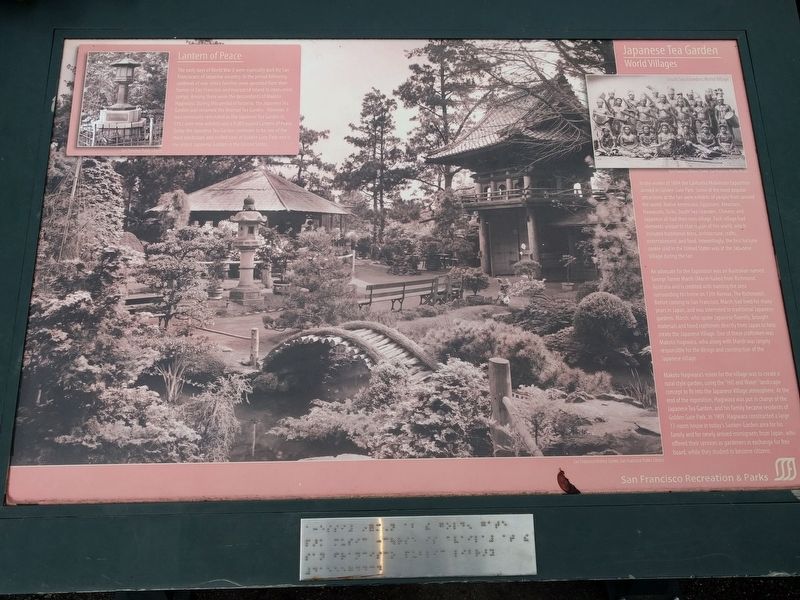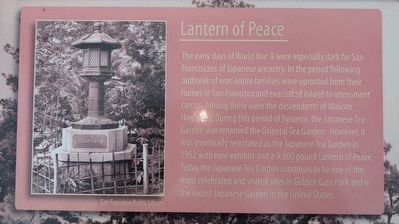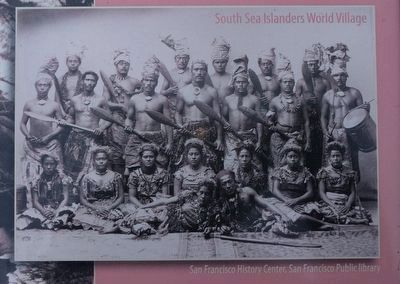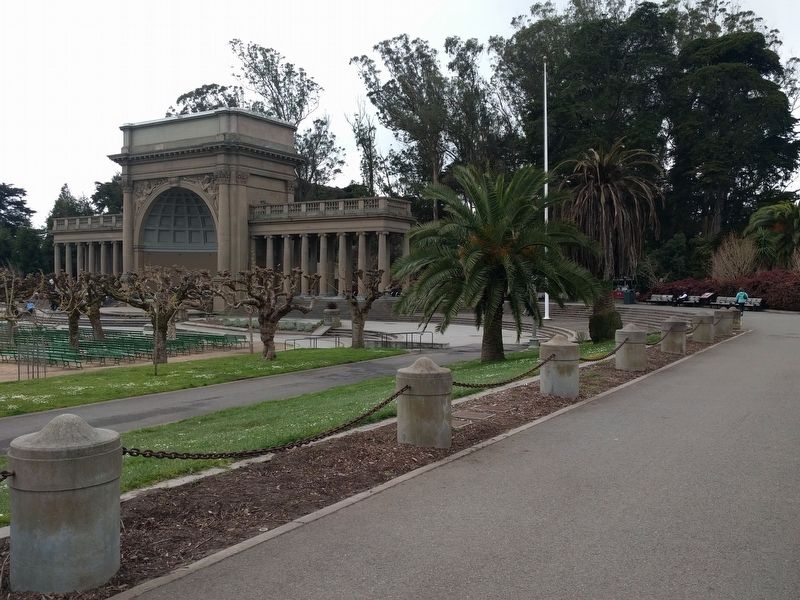Golden Gate Park in San Francisco City and County, California — The American West (Pacific Coastal)
Japanese Tea Garden
World Villages
In the winter of 1894 the California Midwinter Exposition arrived in Golden Gate Park. Some of the most popular attractions at the fair were exhibits of people from around the world; Native Americans, Egyptians, Aleutians, Hawaiians, Turks, South Sea Islanders, Chinese, and Japanese all had their own village. Each village had elements unique to that region of the world, which included traditional dress, architecture, crafts, entertainment, and food. Interestingly, the first fortune cookie sold in the United States was at the Japanese Village during the fair.
An advocate for the Exposition was an Australian named George Turner Marsh (Marsh hailed from Richmond, Australia and is credited with naming the area surrounding his home on 13th Avenue, The Richmond). Before coming to San Francisco, Marsh had lived for many years in Japan, and was interested in traditional Japanese gardens. Marsh, who spoke Japanese fluently, brought materials and hired craftsmen directly from Japan to help create the Japanese Village. One of these craftsmen was Makoto Hagiwara, who along with Marsh was largely responsible for the design and construction of the Japanese village.
Makoto Hagiwara's vision for the village was to create a rural style garden, using the "Hill and Water" landscape concept to fit into the Japanese Village atmosphere. At the end of the exposition, Hagiwara was put in charge of the Japanese Tea Garden, and his family became residents of Golden Gate Park. In 1909, Hagiwara constructed a large 17-room house in today's Sunken Garden area for his family and for newly arrived immigrants from Japan, who offered their services as gardeners in exchange for free board while they studied to become citizens.
Lantern of Peace
The early days of World War II were especially dark for San Franciscans of Japanese ancestry. In the period following outbreak of war, entire families were uprooted from their homes in San Francisco and evacuated inland to internment camps. Among these were the descendents of Makoto Hagiwara. During this period of hysteria, the Japanese Tea Garden was renamed the Oriental Tea Garden. However, it was eventually reinstated as the Japanese Tea Garden in 1952 with new exhibits and a 9,000 pound Lantern of Peace. Today the Japanese Tea Garden continues to be one of the most celebrated and visited sites in Golden Gate Park and is the oldest Japanese Garden in the United States.
Erected by San Francisco Recreation & Parks.
Topics. This historical marker is listed in these topic lists: Entertainment • Horticulture & Forestry • Parks & Recreational Areas. A significant historical year for this entry is 1894.
Location. 37° 46.215′ N, 122° 28.137′ W. Marker is in San Francisco, California, in San Francisco City and County. It is in Golden Gate Park. Marker can be reached from Hagiwara Tea Garden Drive north of Martin Luther King Jr. Drive, on the left when traveling south. Marker is in the Music Concourse of Golden Gate Park, to the right of the Bandshell. Touch for map. Marker is in this post office area: San Francisco CA 94118, United States of America. Touch for directions.
Other nearby markers. At least 8 other markers are within walking distance of this marker. Japanese Tea Garden Gates (within shouting distance of this marker); California Midwinter International Exposition (within shouting distance of this marker); Golden Gate Park: A Brief History (about 300 feet away, measured in a direct line); a different marker also named The California Midwinter International Exposition (about 400 feet away); The Music Concourse (about 400 feet away); The Vintage Vase (Le Poème de la Vigne) (about 600 feet away); Pair of Sphinxes (about 700 feet away); The California Academy of Sciences (about 700 feet away). Touch for a list and map of all markers in San Francisco.
Also see . . . California Midwinter Fair of 1894: An Orientalist Exposition. Article on tthe FoundSF wiki. (Submitted on April 14, 2019, by Joel Seewald of Madison Heights, Michigan.)
Credits. This page was last revised on February 7, 2023. It was originally submitted on April 14, 2019, by Joel Seewald of Madison Heights, Michigan. This page has been viewed 329 times since then and 27 times this year. Photos: 1, 2, 3, 4. submitted on April 14, 2019, by Joel Seewald of Madison Heights, Michigan.



